Pueblo de ponce: Ponce, Puerto Rico – Pearl of the South
Ponce, Puerto Rico
(PON-sai)
With a population of 194,636, Ponce is Puerto Rico’s second largest
city (San juan is the first and Mayaguez is the third). Ponce is commonly known by several names:
La Perla del Sur (Pearl of the South),
La Ciudad de los Leones (City of Lions), or
La Ciudad de las Quenepas (Genip City).
Ponce is also known as the “Ciudad Señorial” (Majestic or Noble City),
because of its many beautiful neoclassical buildings and facades.
Ponce was founded in 1692 by Juan Ponce de León’s great-grandson –
Loíza Ponce de León.
Ponce was Spain’s capital of the southern region until it fell to the U.S. in 1898.
Nearly one half a billion dollars have been spent preserving the
colonial core of Ponce. The heart of Ponce dates from the late 17th
century and has been declared a national treasure. It consists of plazas
and churches and highly decorative colonial homes, some glorious
fountains and a unique fire station.
The beautiful downtown Plaza de las Delicias is a worthwhile stop, with
lovely fountains, a cathedral and local bench sitting denizens. The unique
red and black, century old wooden firehouse, commonly known as Parque de Bombas is a
landmark and still in use. Parque de Bombas originally built in 1882
for an exposition and from 1883 to 1989 it served as headquarters of the
Ponce Fire Corps. In 1990, the firehouse was reopened as a museum, there
are exhibits on the second floor, and the municipal band plays a free
concert every Sunday night. Open Wed-Mon 9:30am-6pm, free admission, (787) 284-4141, ext. 342.
Nearby sits Casa Armstrong-Poventud a magnificent
example of the neoclassical architectural heritage of the island,
its white-domed building on the west side of the main square houses
the Puerto Rican Institute of Culture and the Puerto Rican Tourism
Company’s regional offices. Guided tours are available.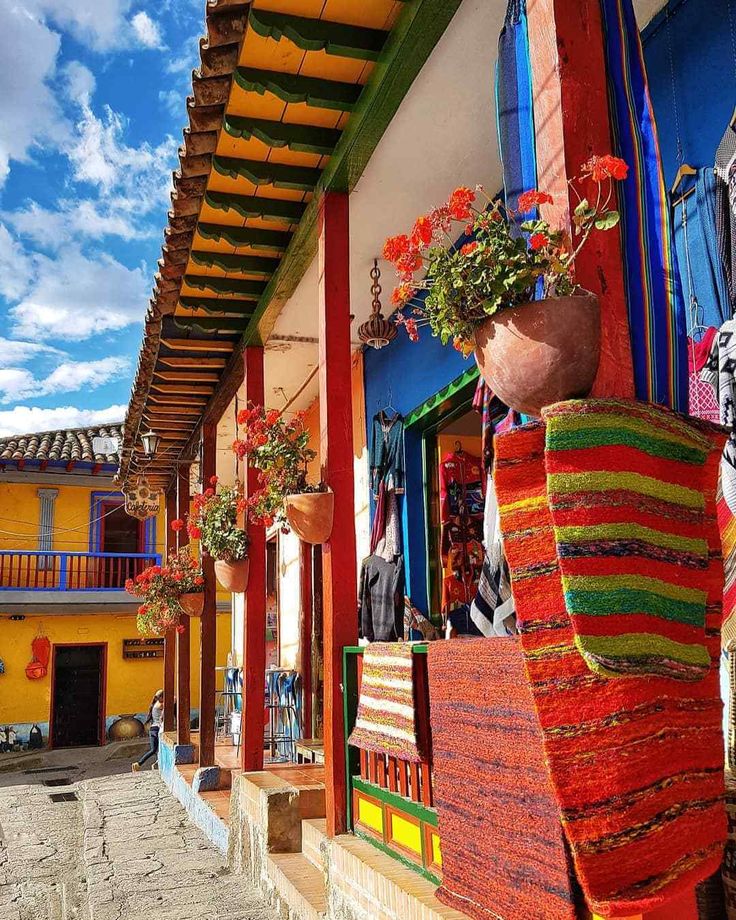 Located in
Located in
front of the town square. Mon-Fri 8am-noon, 1-4:30pm. (Closed, awaiting restoration.)
The Catedral de la Guadalupe was built in 1883, this beautiful church stands in the center of
the plaza, surrounded by lovely fountains, bench sitting denizens, and a century old wooden firehouse. Located on the Plaza Degetau.
(787) 842-0134
Teatro la Perla was built in the neoclassical style in 1864, remains one of the most visible symbols
of the economic prosperity of Ponce during the mid-19th century. Designed by Juan Bertoli, an Italian-born resident of
Puerto Rico who studied in Europe, it was destroyed by an earthquake in 1918, and rebuilt in 1940 according to the
original plans; it reopened to the public in 1941. Located on Mayor St., (787) 843-4080.
Other interesting buildings around the plaza include Casa
Alcaldía (city hall), the oldest colonial building in the city,
dating to the 1840s. There is also the Central Mercedita,
found in 1870 by Don Jose Ramón de Aponte.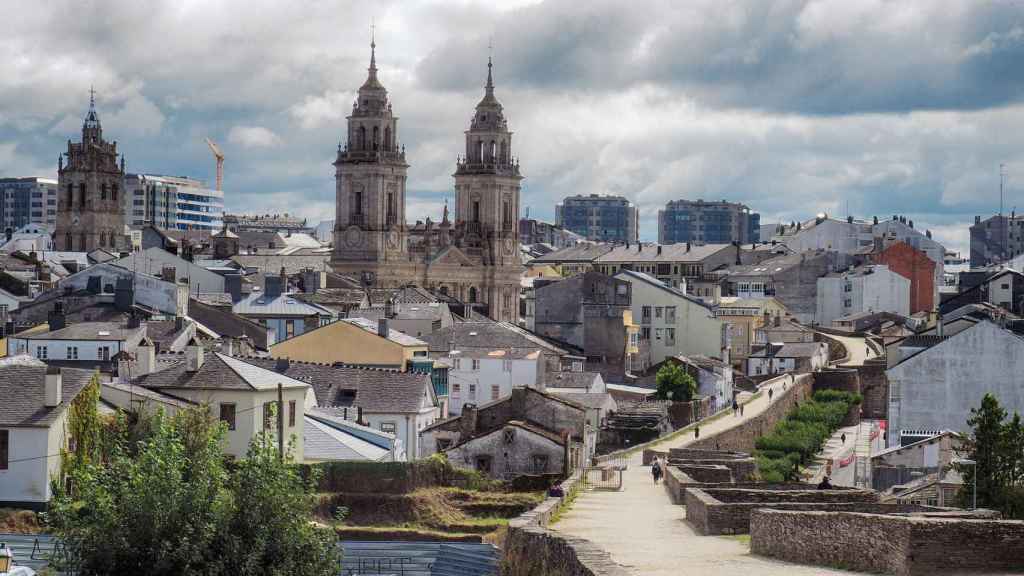 In 1938, the facilities packed about 60,000 tons of sugar.
In 1938, the facilities packed about 60,000 tons of sugar.
The Museum of Puerto Rican Music traces the rich musical history of the
island through memorabilia of famous musicians and displays of Indian, Spanish
and African musical instruments. Open Wednesday-Sunday 9 am – noon and 1-5:30
pm, admission $1. Located on 70 Christina St., (787) 844-9722.
The Ponce School of Fine Arts, a 19th-century building, originally served as the Spanish
military headquarters and known as El Castillo. It later became the Ponce Jail, but in 1992 it was inaugurated
as the Ponce School of Fine Arts.
The Art Museum of Frame Masters features fine arts, paintings, sculptures,
canvas reproductions, expert framings, and moldings.
Located on 715-A Tito Castro, (787) 848-0307.
The world class Ponce Museum of Art, designed by Edward Durrell
Stone (Museum of Modern Art, NY), is the only museum of stature,
houses the most extensive art collection in the Caribbean.
The museum was donated by a foundation established by Luis A Ferré
(Governor 1968-72). The building, with seven interconnected hexagons, glass cupolas
and a pair of curved staircases, contains one of the most important
pre-Raphaelite collections in the western hemisphere. The museum houses
more than 1,000 paintings and 400 sculptures, including the finest collection of
European works in the Caribbean, such as works by Velasquez, Van Dyck, Reubens, Rodin, Delacroix and Gainsborough.
Many important Puerto Rican pieces are included in the collection, some
Inca pottery and even Thai pieces. The museum also offers exhibits by
contemporary Puerto Rican artists. Open daily 10am – 5pm. Admission:
Adults $4, children $2, (787) 848-0511 or (787) 848-0505.
Casa Paoli located in Ponce houses exhibits on the singer’s life as well as a shop
displaying colorful papier-mache masks used in Ponce’s annual Carnival celebrations. Mon-Fri 10am-noon, 2-5pm, (787) 840-4115.
Today, the House of the Ponce Massacre was build in recognition of
one of the bloodiest events in Puerto Rico’s political history. On March 21, 1937, a group of Nationalists,
On March 21, 1937, a group of Nationalists,
who were denied a permit to hold a demonstration, dressed in black shirts and assembled before this building.
As they marched to the tune of the Puerto Rican national anthem, a shot was fired–the origin of which was never
determined. An exchange of gunfire ensued between the marchers and police. Twenty people were killed and hundreds injured.
(787) 284-4141.
La Guancha Paseo Tablado, the boardwalk, is a fun stop where you can
loiter with lively local Ponceños-the teen scene, elders and the
toddler-mamma set. The pier here is the departure point for a regularly
scheduled weekend ferry to Caja de Muertos
(Coffin Island or Dead Box Island), a small island of pristine
beaches, an old lighthouse (built in 1887) and a marked snorkel trail (under
construction).
The island is approximately 2.75 km wide by 1.85 km long, with a total area of 202 hectares. The island has no permanent inhabitants.
Ferry services: Saturday, Sunday and holidays from 9am and return to 5pm..jpg)
For a incredible view of how the mountains meet the sea at Ponce,
drive to the summit of El Vigia Hill, where scouts once scanned for
attacking ships. Visitors can ascend La Cruceta del Vigia, a 100-foot
observation tower, and view of Ponce and Caja de Muertos. Built in 1984, the cross is a memorial to the
Spanish garrison established atop of the hill to watch for smugglers’ ships attempting to unload
contraband on the southern coastline of Puerto Rico back in 1801.
The Castillo Serralles (Serralles Castle) located near to El Vigia Hill, is a
lovely landscaped former residence of the most powerful rum-producing families,
the Serralles family, producers of Don Q rum. The Serralles Castle is a magnificent
example of Spanish Revival architecture, popular in the 1920’s; indoor patio with
fountains, beautiful formal gardens paralleling the style of the house, well-manicured
flame of jungle plants growing in a pattern that matches the ironwork on the house. It was designed
It was designed
by architect Pedro de Castro and was completed in the early 1930’s. Today stands as museum dedicated
to the history of the sugar and rum industries. Open Tue-Thr 9:30am-5pm; Fri-Sun 9:30am-5:30pm.
Closed on Mondays. Free transportation from Plaza Las Delicias de Ponce via trolley. Admission
$5 adults, $2.50 seniors, $2.50 children under 16. Call for group reservations, (787) 259-1774.
Nearby is the Tibes Indian Ceremonial Center discovered in 1975 after
hurricane rains uncovered pottery and only a small portion has so far
been excavated. This site is home of the oldest cemetery uncovered up to date in the
Antilles, with 186 skeletons unearthed from A.D. 300. It is also considered
the largest and the most important archaeological finds in the West Indies.
This archeological discovery affirms that the Igneri Indians (pre-Taino) did
not completely disappear without leaving traces of their existence other than samples of ceramic pottery.
At Tibes, there is proof that the Igneris were farmers, fishermen, and hunters of birds and small animals.
On April 14, 1978, it was listed in the National Register of Historic Places.
Since April 30, 1982, the site opened its doors to the public. Today, it is a popular a tourist attraction,
featuring seven bateyes (ball fields), some carved with petroglyphs, said to have been used for a soccer like
game. On one of two dance grounds, stones line up with the sun during the equinox and solstice, making Tibes
a pre-Columbian astronomical observatory.
There is a reconstructed Taíno village with thatched roof bamboo huts, a museum, an
exhibition hall that presents a documentary about Tibes, a cafeteria, and a souvenir shop.
Open Tue-Sun 8:30am-4pm. Admission: Adults $2, children $1, (787) 840-2255.
Built in 1911, the Museo de la Historia de Ponce (Museum of the History of Ponce)
and lived in by the Salazar family. Soon after, the musuem opened its doors in 1992 and it was the first museum in Puerto Rico
totally devoted to the history of the people of a city, displaying documents, objects and relics
related to the historical development of the city. Located at 53 Calle Isabel.
Located at 53 Calle Isabel.
Open Wed-Mon, 9am-5pm, admission US $3 for adults, US $1 for children, (787) 844-7071.
The Museo Casa Wiechers-Villaronga a house designed by famous architect Alfredo Wiechers for his own family
in the early 20th century, contains the original 1911 furniture
and architectural details traditional in Ponce urban homes. Recently restored by the Instituto
de Cultura Puertorriquena. Open Wed-Sunday, 8am-4:20pm, (787) 848-7016.
Hacienda Buena Vista Buena Vista Plantation) also known as Hacienda Vives
was built in 1833 by Don Salvador de Vives, originally devoted to growing fruits, then converted
into a coffee plantation and corn mill in 1845 with continued operation until 1937.
Hacienda Buena Vista was beautifully restored by Puerto Rico Conservation Trust and has been
operating as a museum since 1986. All the machinery still in working condition (the metal parts
are original) and is operated by water channeled from the 360m Vives waterfall; the hydraulic
turbine which turns the corn mill is unique and the only remaining example of the Barker hydraulic
turbine. The plantation features a main house, slave quarters, farm buildings, and processing areas
The plantation features a main house, slave quarters, farm buildings, and processing areas
providing visitors with a unique insight into Puerto Rican last century history and best remaining
example of a Puerto Rican coffee plantation. The rooms of the hacienda have been furnished with
authentic pieces from the 1850s.
Located on Rte. 10, Barrio Magũeyes, km 16.8. Open Fri-Sun, 2-hour tours
at 8:30am, 10:30am, 13:30am and 15:30am; groups of 20 or more admitted Wed and
Thur; US$5 adults, US$2 children under 12. Reservations are required. Weekdays
(787) 722-5882, weekends (787) 848-7020.
If you are looking for shopping malls, Plaza del Caribe is the most elegant shopping mall in Ponce.
You will find over 100 shops as well as six theaters and a restaurant area to satisfy their entertainment and gastronomic
needs. Mon-Sat 9am-9pm; Sun 11am-5pm, (787) 259-8989.
The Fox Delicias Mall, located in front of the plaza in Ponce. Restaurants occupy the entire
bottom floor, while the many shops and a cafe-theater are on the second story.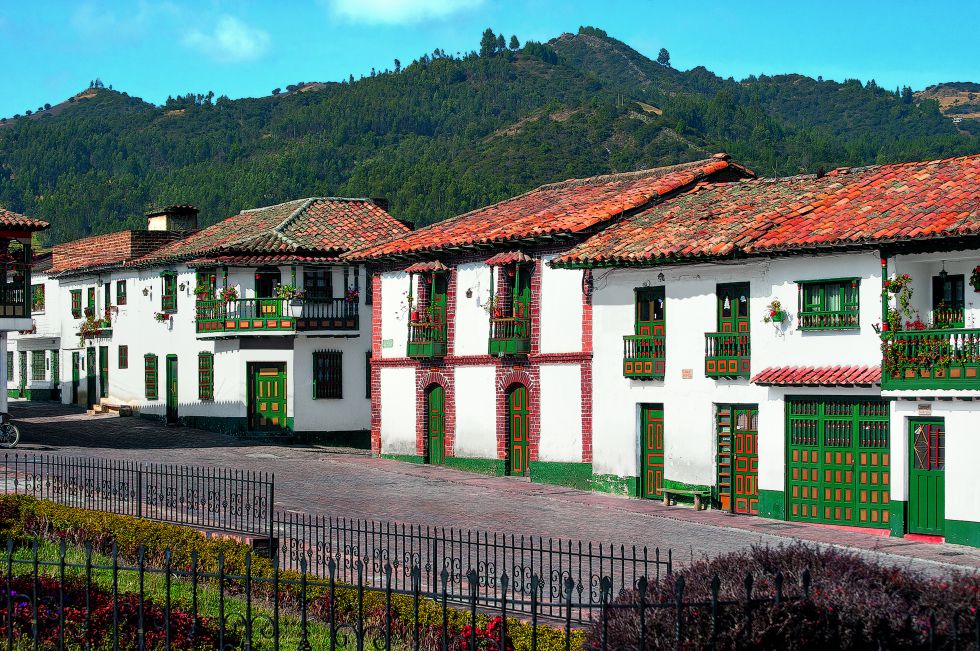 Mon-Thu 8am-9pm; Fri-Sat 8am-11pm;
Mon-Thu 8am-9pm; Fri-Sat 8am-11pm;
Sun 8am-9pm, (787) 259-6413.
There is also the Centro del Sur Shopping Center houseing about 50 shops. Mon-Thu 9am-6pm;
Fri 9am-9pm; Sat 9am-6pm; Sun 10am-5pm,
(787) 725-4600.
South of Ponce you can find Cardona island, where a 19th century
lighthouse still stands.
Economy
Ponce is an important trading and distribution center, and has a port
of entry; Playa de Ponce Port is one of the busiest ports in the Caribbean area, handles
coffee, tobacco, molasses, rum, and bananas and other
tropical fruits. Its principal manufactures include textiles, shoes, cement,
paper, electrical devices, and metal products. Industries include tourism, the
processing of agricultural products, rum distilling, canning, and diamond
cutting.
Geography
Ponce is located in the Southern Coastal Plain region
(about 5 km (3 mi) from the south central coast of the island),
south of Adjuntas, Utuado and Jayuya;
east of Peñuelas; and west of Juana
Díaz.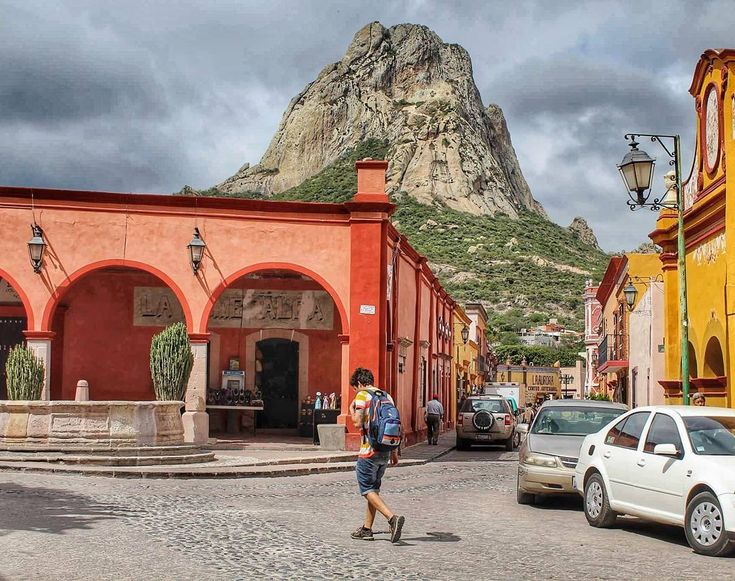
Ponce is made up of 19 barrios (wards/districts):
- Anón
- Bucaná
- Canas
- Capitanejo
- Cerrillos
- Coto Laurel
- Guaraguao
- Machuelo
- Maguelles
- Maraguez
- Marueño
- Monte Llano
- Portugués
- Pueblo
- Quebrada Limón
- Real
- Sabanetas
- San Patricio
- Tibes
- Vayas
The town is bathed by many rivers including: San Patricio, Cerrillos, Chiquitos, Inabon, Pastillo,
Canañas, Bucana, and Portugués.
Climate
Annual precipitation is approximately 36 inches on the coast and
48 inches in the interior and the average temperature is 75°F.
Precipitation is the lowest in February, with an average of 1 inch. Most precipitation falls in October, with an average of 6 inches.
August is the hottest month of the year.
10 Day Forecast
Notable People
There are many well-known ponceños, among them:
- composer and musician Juan Morel Campos
- Pedro Albizu Campos
- singer Ednita Nazario
- former governor and founder of the New Progressive Party of Puerto Rico
Luis A. Ferré
Ferré - tenor Antonio Paoli
- founder of Destilera Serralles Juan Serrallés
- Pedro Albizu Campos
- former governor Rafael Hernandez Colón
- Juan Rosario Ferré
Symbols
Flag
The flag consist of a rectangular cloth divided by a diagonal line, creating two equal
isosceles triangles, starting from the top left hand corner and ending on the lower
right hand corner. The top triangle is red; the bottom triangle is black. In the center
of the flag sits the shield of the municipality. Under this shield is the number 1877,
the year of the founding of the city, and above the shield is the word Ponce.
Coat of Arms
The coat of arms of the municipality is based on the design of the official mayoral seal
that was adopted in 1844 under the administration of mayor Salvador de Vives. The coat
of arms of Ponce consists of a escutcheon (shield) in the Spanish tradition. This shield
has a field with a party per bend division. The division runs from top left to bottom
The division runs from top left to bottom
right. The field is read and black, bordered with a fine golden line. In the center
of the shield is the figure of an erect lion standing on a bridge. The top of the bridge
is a golden, the middle is red bricks, and the base foundation is gray rocks. Under
the bridge there are gray wavy lines. Over the shield rests a five-tower golden stone
wall with openings in the form of red windows. To the left of the shield is a coffee
tree branch with its fruit, and to the right of the shield is a sugar cane stalk.
The symbols of the shield are as follows: The field represents the flag of the
municipality of Ponce, divided diagonally in the traditional city colors: red
and black. The lion over the bridge alludes to the last name of the conqueror and
first governor of Puerto Rico, Juan Ponce de Leon. The waves under the bridge allude
to the Rio Portugues, on the banks of which the city was born. The coronet in the
form of a five-tower mural crown above the shield allude to the Spanish crown, through
which the settlement obtained its city charter.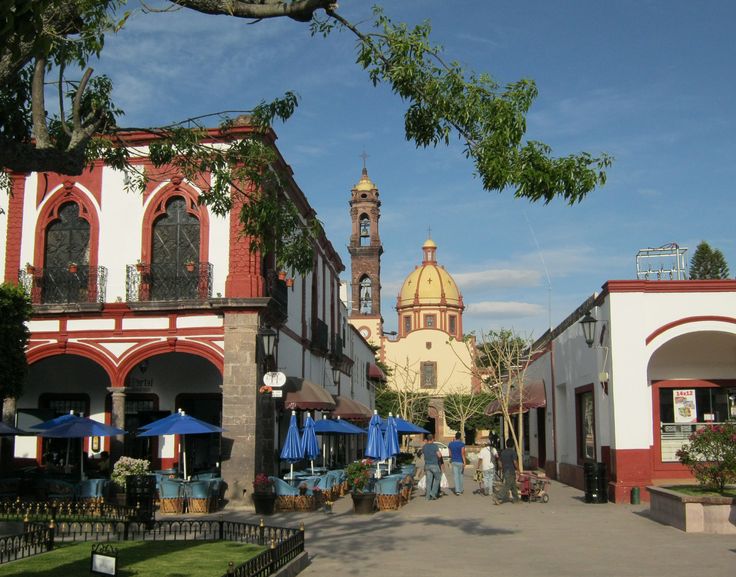 The coffee tree branch and the sugar
The coffee tree branch and the sugar
cane stalk represent the main agricultural basis of the economy of the young municipality.
Anthem: Oh, Ponce! En mi corazón…
Restaurants
- Acqua Pazza (Italian), (787) 259-7676
- Bohio Sport and Pool Bar (American), (787) 259-7676
- Cafe Mediterraneo (Puerto Rican), (787) 840-0736
- Cafe Tomas (Puerto Rican), (787) 840-1965
- Candas (International),
- Casa del Rey (Spanish), (787) 290-7740
- Cava (International), (787) 844-1200
- Chef Creations (International), (787) 848-8384
- Chili’s Grill & Bar (Ponce) (American), (787) 284-0570
- Ciaccios (Puerto Rican), (787) 842-3674
- Coche (International), (787) 840-1521
- Criollisimo Restaurant (Puerto Rican), (787) 840-0818
- Dennys Ponce (American), (787) 259-1750
- El Ancla (Puerto Rican), (787) 840-2450
- El Bohio Garden Bar (International), (787) 844-1200
- El Sabor Restaurant (Puerto Rican), (787) 290-5050
- Holiday Inn (International), (787) 844-1200
- Il’ Olio Pizzeria (Italian), (787) 841-0101
- La Bohemia (International), (787) 259-7676
- La Cava (Italian), (787) 259-7676
- La Montserrate Seaport (Sea Food), (787) 841-2740
- La Terraza (International), (787) 259-7676
- Lydia’s (Sea Food), (787) 844-3933
- Mark’s at the Melia (International), (787) 284-6275
- Pito’s Restaurant (Sea Food), (787) 841-4977
- Ponce Pizza (Pizza), (787) 259-4671
- Restaurante Maria Bonita (Mexican), (787) 813-2444
- Sancho’s (American), (787) 259-7676
- Seasons Restaurant (International), (787) 290-5050
- Taino (International), (787) 841-1000
- Tanama Restaurant (Spanish), (787) 844-1200
- Weekend’s Grill & Bar (American), (787) 284-2227
Fax (787) 284-2332
Accommodations
- Belgica (Hotel),
(787) 844-3255 - Complejo Turistico Recreativo El Tuque (Hotel),
(787) 290-2000 - Fox Delicias Hotel (Hotel),
(787) 290-5050 - Holiday Inn and El Tropical Casino Ponce (Hotel),
(787) 844-1200 - Howard Johnson Hotel Ponce (Hotel),
1 (866) 668-4577
(787) 841-1000 - Melia Hotel (Small Inn),
(787) 842-0260 - Ponce Hilton Golf & Casino Resort (Hotel),
(787) 259-7676
1-800-HILTONS - Efficiency Apartment (Rental),
(561) 684-8635
Festivals and Events
- Carnaval Ponceño – February 21, 2020 – February 25, 2020
The annual week-long celebration usually takes place in February, the week before Ash Wednesday, culminating with a fake funeral procession and the Burial of the Sardine.
It is believed that this carnival is one of the oldest celebrations in the western hemisphere, dating back to 1858.
Most of the events occur in the historic downtown of Ponce, at the Plaza Las Delicias and the Casa Alcaldia. Parades takes place every day, featuring musical events, artisans and the famous parades of Vejigantes. The Vejigantes are the stars of the Carnival, originating in centuries-old African, Caribbean, and Spanish customs and traditions. These local folk characters representing good and evil spirits and they wear colorful papier-mache mask and costumes.
(787) 840-4141 - Festival de Bomba y Plena – November
(787) 840-4141 - Festival de Teatro Luis Torres Nadal – February
The Teatro La Perla in Ponce holds an annual theater festival in honor of Luis Torres Nadal. The festival features productions by local theater companies and musicians. Tickets $10-$11.
(787) 843-4080 - Festival Playa de Ponce – May
- Fiestas Patronales de Nuestra Senora de la Guadalupe – December
Every year, Ponce celebrates a patron saint festival. The festivities include dances, food, parades and religious processions.
The festivities include dances, food, parades and religious processions.
(787) 840-4141 - Las Mananitas – December 12
Every year on December 12 at 4 am, a religions procession that starts at Lolita Tizol Street and moves toward the city’s Catholic church is led by Mariachis singing traditional Mexican songs including the lead song “Las Mananitas” to honor Our Lady of Guadalupe, the city’s patron saint. The procession is followed by a morning mass at 6 am and breakfast. Rides, local cuisine, and parades continue through the weekend at the Plaza Las Delicias.
(787) 284-4141 - Ponce Crafts Fair – March
Ponce celebrates every year the famous “Feria Artesenal”. the celebration includes dance, music, food and exhibits by artisans from several cities of the island.
(787) 844-8240 - Semana de la Danza – May 10-18, 2020
Ponce celebrates historical-cultural events commemorating the danza, a popular turn-of-the-century ballroom dance. The celebration lasts a week and takes place in mid-May and centers around the danza, a formal, elegant dance form that originated in the city of Ponce. Festivities (held in Teatro La Perla) includes conferences, danza concerts by string quartets, a parade, a danza competition and demonstrations by senior couples who danced danza in their youth, in period dress.
The celebration lasts a week and takes place in mid-May and centers around the danza, a formal, elegant dance form that originated in the city of Ponce. Festivities (held in Teatro La Perla) includes conferences, danza concerts by string quartets, a parade, a danza competition and demonstrations by senior couples who danced danza in their youth, in period dress.
(787) 284-4141
Education
There are 77 public schools in Ponce,
education is handled by the Puerto Rico Department of Education. Ponce is also home of 14 colleges and universities.
Demographics *
Population
137,491
Puerto Rico: 3,285,874
Land Area: 114.76 sq mi
Density: 1,175.30 per sq mi
Median Age: 43.9
Sex: 52% female
Economics **
Per capita income
$11,680
Puerto Rico: $21,058
Median household income: $17,263
Puerto Rico: $21,058
Persons below poverty line: 51.2%
Housing, families and educational attainment *
Number of households
52,439
Housing units density:
606. 7 (2013)
7 (2013)
Persons per household: 2.52
High school grad or higher: 77.9%
Marital status: 33% married
* U.S. Census Bureau 2020 data, unless otherwise noted – Source: Quick Facts Puerto Rico.
** U.S. Census Bureau 2016-2020
Map References
Coordinates: 18.0000° N, 66.6167° W
Zip Code: 00715, 00716, 00717, 00728, 00730, 00731, 00732, 00733, 00734, 00780
Driving Distance from San Juan: 76.7 miles
Driving Time: 1 hour, 47 minutes
Other Resources
- Walking Tour
Throught Ponce Map (Frommer’s Puerto Rico, 5th Edition)
Historia de Ponce/History of Ponce
Fecha de fundación: Ponce, el poblado, se fundó en el año 1692. En el año 1848 fue declarado Villa y en el 1877 se le concedió el título de ciudad por disposición del Rey de España, Alfonso XIII.
Origen del nombre: El nombre de PONCE corresponde al apellido de don Juan Ponce de León, conquistador y primer gobernador de la isla de Puerto Rico.
Cognomento (Renombre valorativo o de reconocimiento ganado o que le haya sido atribuido a la ciudad): A Ponce se le conoce, indistintamente, como Ciudad Señorial, La Perla del Sur, Ciudad de las Quenepas y Ciudad de los Leones.
Gentilicio: Ponceños.
Ubicación geográfica: El municipio de Ponce está situado en la zona costera llana del Sur, entre la Cordillera Central y el Mar Caribe.
Temperatura – Aproximadamente de 80 a 90 grados Fahrenheit (28 a 32 centígrados) con cielos claros y soleados la mayor parte del año. Llueve poco, lo que permite actividades constantes al aire libre.
Lenguaje – Español e Inglés
Extensión territorial: Ponce ocupa, en la geografía de la Isla de Puerto Rico, un espacio de 116 millas cuadradas (300 kilómetros cuadrados).
Población: El número de habitantes del municipio de Ponce, según dato del Censo del año 2000, asciende a 186,475.
Distancia a San Juan: 70 millas (112.6 kilómetros)
Patrona: La Virgen de Guadalupe
Fiestas patronales: Estas se celebran cada 12 de diciembre, día de la Patrona de Ponce, la Virgen de Guadalupe.
Flor símbolo: La flor del árbol del Roble “Nativa”.
Árbol símbolo: La Ceiba.
Fruta típica: La quenepa.
Aves símbolo: El pitirre y la Reina Mora.
Animal símbolo: El león.
Platos típicos: Yaniclés, salmorejo de jueyes, el pionono y el piquito.
Piedra símbolo: La perla.
Colores distintivos: Los colores distintivos de la ciudad de Ponce son el rojo y negro, los que se representan en su bandera. La misma tuvo sus orígenes en el emblema del quinteto atlético de la Ponce High School. Afirma el cronista José Alcalá que los estudiantes de la Alta Escuela vociferaban que llevarían a los Juegos Escolares del 1906 a celebrarse en San Juan, el fuego del triunfo (representado en el color rojo) y la muerte de la derrota, en alusión a los equipos contrincantes (simbolizado en el color negro). De acuerdo a la interpretación de la heráldica de los colores rojo y negro. El rojo simboliza: el fuego, la fortaleza, el valor, la fidelidad, la alegría y el honor; mientras el color negro es representativo de la noche, el arrepentimiento, la prudencia, el temor y la deshonra.
De acuerdo a la interpretación de la heráldica de los colores rojo y negro. El rojo simboliza: el fuego, la fortaleza, el valor, la fidelidad, la alegría y el honor; mientras el color negro es representativo de la noche, el arrepentimiento, la prudencia, el temor y la deshonra.
Postre típico: Bien me sabe.
Dulces típicos: La cremita de coco y el capuchino.
Definición de la personalidad del ponceño: Los ponceños conjugan en su personalidad como pueblo, la humildad y el calor humano en el trato con sus semejantes y visitantes de otros municipios de la Isla o países, con una alta autoestima y fundado orgullo por la grandeza de su ciudad, sus actividades culturales y deportivas, sus tradiciones y su legado histórico.
Founding Date: Ponce, the village, was founded in the year 1692. In the year 1848 in was declared a Villa and in 1877 it was granted the title of city by the King of Spain, Alfonso the 13th.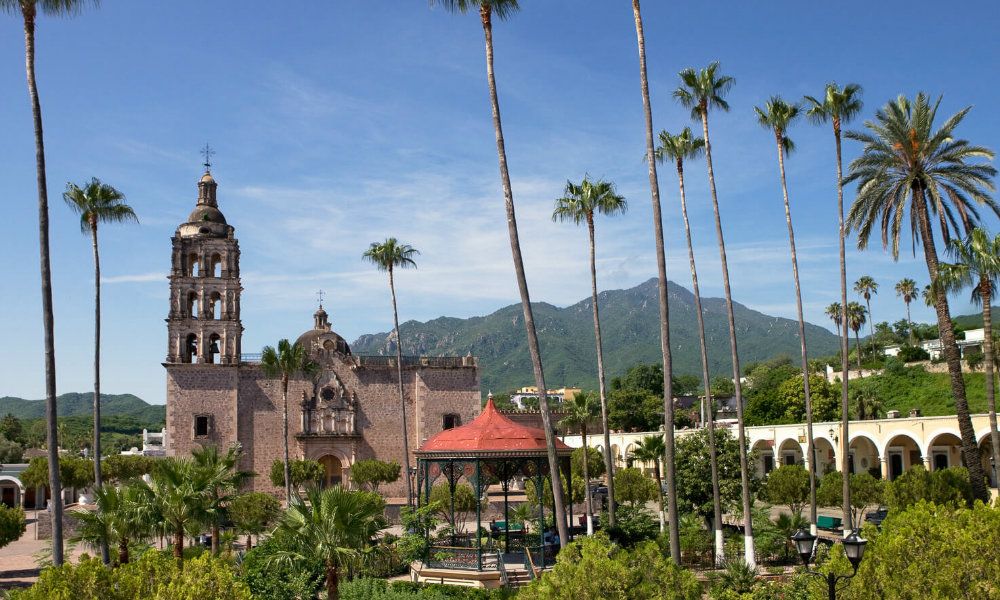
Origin of the Name: The name PONCE corresponds to the surname of Don Juan Ponce de León, conquistador and first governor of the island of Puerto Rico.
Other names: Ponce is known distinctively by the Manorial City, The Pearl of the South, The City of Quenepas and The City of Lions.
Inhabitants: “Ponceños”
Geographical Location: The municipality of Ponce is located at the flat coastal zone of the south, between the Central Mountain Range and the Caribbean Sea.
Temperature – Approximately from 85 to 90 degrees Fahrenheit (28 to 32 Celsius) with clear and sunny skies for the majority of the year. There is little rain, which allows constant activities on the outside.
Language – English and Spanish
Territorial Extension: Ponce occupies, in the geography of the island of Puerto Rico, a space of 116 square miles (300 kilometers)
Population: The number of inhabitants on the municipality of Ponce, according to the Census of the year 2010, it ascends around more than 160,000 people.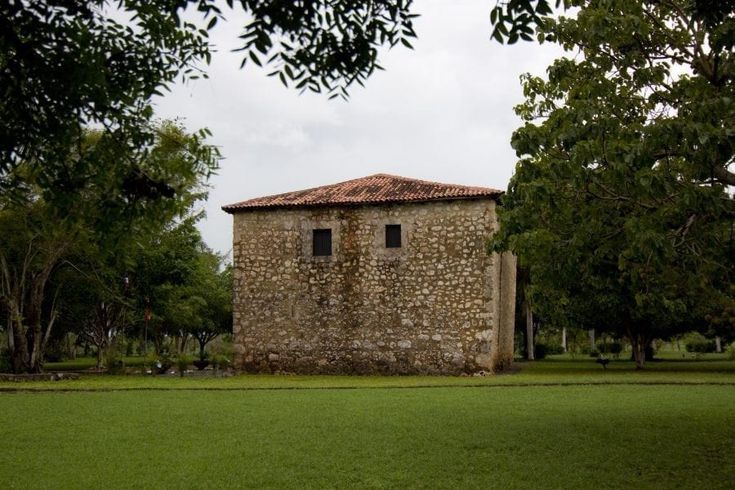
Distance to San Juan: 70 miles (112.6 kilometers)
Patron Saint: “La Virgen de Guadalupe” (The Virgin of Guadalupe)
Festivities: These are celebrated every December 12, Day of the Patron Saint of Ponce, The Virgin of Guadalupe.
Symbolic Flower: The flower of our Native Oak Tree
Symbolic Tree: The Ceiba
Typical Fruit: The Quenepa
Symbolic Bird: The Pitirre and the Reina of Mora
Symbolic Animal: The Lion
Typical Foods: Yaniclés, Salmorejo Jueyes, Pionono and beak.
Symbolic Stone: The Pearl
Distinctive Colors: The distinctive color of the City of Ponce are red and black, the ones that represent their flag. The same had its origins in the emblem of the athletic quintet of the Ponce High School. The chronicler José Alcalá says that the students of the High School started screaming that they would bring the fire of triumph to the School Games of 1906 that were being held at San Juan (represented by the color red) and the death of the defeat, in allusion to the opposing teams (represented by the color black).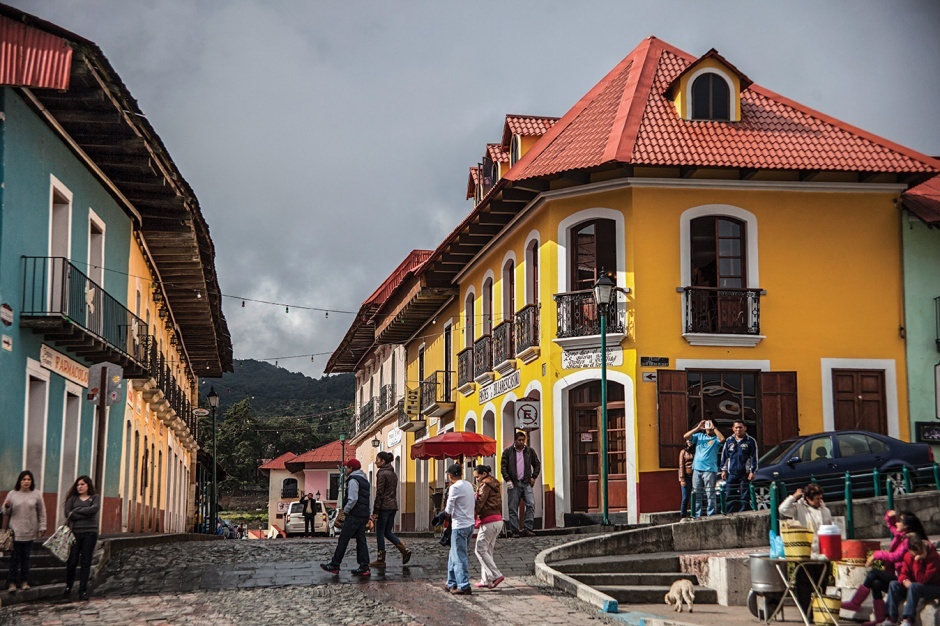 According to the interpretation from the heraldry the color red and black. The color red symbolizes: the fire, the strength, the courage, the fidelity, the joy and the honor; on the other hand the color black symbolizes: the night, the regret, the prudence, the fear and the dishonor.
According to the interpretation from the heraldry the color red and black. The color red symbolizes: the fire, the strength, the courage, the fidelity, the joy and the honor; on the other hand the color black symbolizes: the night, the regret, the prudence, the fear and the dishonor.
Typical Deserts: Good they taste
Typical Sweets: The Coconut Cream and the Cappuccino
Definition of the personality of the Ponceño: The ponceño combines in their personality as a town, humility and the human warmth when treating with their own or visitors from other municipalities of the island or countries, with a high self-esteem and founded by the pride of their great City, their cultural activities and sports, their traditions and historic legacy.
Retrato del Ponceño:
“El ponceño se distingue por el frenesí de amor hacia su patria chica; por el espíritu combativo al momento de defender los derechos de sus fueros y el orgullo que profesa por las gestas históricas de su pueblo.
”
Jorge Figueroa Irizarry
Curador General División de Patrimonio Cultural
Portrait of the Ponceño:
“The Ponceño is distinguished by the frenzy of love towards its small country; by the combative spirit at the time of defending the rights of its jurisdictions and the pride it professes for the historical deeds of its people.”
Jorge Figueroa Irizarry
Curator General Cultural Heritage Division
OFICINA DE FOMENTO TURÍSTICO DE PONCE:
Teléfono:(787) 284-4141, extensiones: 2245 y 2254
BANDERA
Ponce ha tenido dos banderas oficiales. La primera fue adoptada mediante una ordenanza municipal en el año 1967. Ésta fue seleccionada a través de un certamen público en la cual resultó ganador por unanimidad el diseño presentado por Mario Ramírez. Esta bandera consistía de un paño rectangular, dividido por una línea diagonal en dos triángulos isósceles iguales. Comenzaba la línea en el ángulo superior derecho y concluía en el ángulo opuesto. Sobre el triángulo superior Izquierdo, de color negro la figura de un león sobre el puente. Sobre el triángulo inferior derecho, de color rojo, el nombre de Ponce, con la fecha 1692 debajo.
Comenzaba la línea en el ángulo superior derecho y concluía en el ángulo opuesto. Sobre el triángulo superior Izquierdo, de color negro la figura de un león sobre el puente. Sobre el triángulo inferior derecho, de color rojo, el nombre de Ponce, con la fecha 1692 debajo.
En 1977, mediante una nueva ordenanza, el gobierno municipal de Ponce cambió la bandera adoptada en la década anterior, por una conmemorativa al centenario cuando el gobierno español le otorgó el título de Ciudad. La nueva bandera consta de un paño rectangular, dividido por una línea diagonal en dos triángulos isósceles iguales, comenzando desde el ángulo superior izquierdo y concluyendo en el ángulo opuesto. El triángulo superior es rojo y el inferior negro. En el centro de la bandera está ubicado el escudo de Ponce. Bajo el escudo debe leer la fecha 1877. Año que le fue concedido a Ponce el título de Ciudad, aunque en algunas banderas se acostumbra colocar la fecha en el borde izquierdo del triángulo inferior. Sobre el escudo debe leer la palabra Ponce, aunque también suele colocarse en el borde derecho del triángulo.
Flag:
Ponce has had two official flags. The first was adopted by a municipal ordinance in the year 1967. This was selected through a public event in which the design presented by Mario Ramírez was unanimously won. This flag consisted of a rectangular cloth, divided by a diagonal line in two isosceles triangles equal. It started the line at the top right angle and concluded at the opposite angle. Over the upper Left triangle, black the figure of a lion on the bridge. Over the lower right triangle, red, the name of Ponce, with the date 1692 below.
In 1977, through a new ordinance, the municipal government of Ponce changed the flag adopted in the previous decade, for a commemorative centenary when the Spanish government granted the title of City. The new flag consists of a rectangular cloth, divided by a diagonal line in two isosceles triangles equal, starting from the upper left angle and concluding at the opposite angle. The Upper triangle is red and the bottom is black. In The center of the flag is located the shield of Ponce. Under The shield you must read the date 1877. Year that was awarded to Ponce the title of City, although in some flags it is customary to place the date on the left edge of the lower triangle. On The shield must read the word Ponce, but also usually placed on the right edge of the triangle.
In The center of the flag is located the shield of Ponce. Under The shield you must read the date 1877. Year that was awarded to Ponce the title of City, although in some flags it is customary to place the date on the left edge of the lower triangle. On The shield must read the word Ponce, but also usually placed on the right edge of the triangle.
ESCUDO
De acuerdo a la regla que establece la heráldica El escudo de Ponce se trata de un campo tronchado (superficie dividida en dos partes por una línea diagonal) que va, desde la perspectiva del observador, del ángulo superior izquierdo al ángulo inferior derecho. Es de color rojo y negro, y está bordeado por una línea o lista fina dorada. En el centro del escudo aparece un león erguido sobre un puente. La parte superior del puente es de color oro, la central de ladrillo y la inferior imitando piedra, es color gris. Bajo el puente figuran una líneas onduladas grises. Sobre el escudo descansa una corona mural dorada, de cinco torres simulando esta hechas de mampostería o piedras, delineadas en negro, con aberturas en formas de ventana en color rojo. Una rama de arbusto de café con su fruto rodea el escudo por el lado izquierdo y un tallo de caña de azúcar lo rodea por el derecho. Los símbolos que conforman el escudo son los siguientes: El campo de escudo representa la bandera del municipio de Ponce, dividida diagonalmente en los colores tradicionales ponceños: el rojo y el negro. El león sobre el puente constituye una ilusión al apellido del conquistador y primer gobernador de Puerto rico, Juan Ponce de León. El río es una alusión al portugués, en cuyos alrededores se fundó Ponce. El conjunto constituye, lo que en heráldicas se denomina, arma parlante (insignia). La corona mural es el timbre (insignia que se coloca encima del escudo) propio de los blasones municipales. Sus cincos torres indican que bajo la soberanía española Ponce alcanzó la categoría y el título de ciudad.
Una rama de arbusto de café con su fruto rodea el escudo por el lado izquierdo y un tallo de caña de azúcar lo rodea por el derecho. Los símbolos que conforman el escudo son los siguientes: El campo de escudo representa la bandera del municipio de Ponce, dividida diagonalmente en los colores tradicionales ponceños: el rojo y el negro. El león sobre el puente constituye una ilusión al apellido del conquistador y primer gobernador de Puerto rico, Juan Ponce de León. El río es una alusión al portugués, en cuyos alrededores se fundó Ponce. El conjunto constituye, lo que en heráldicas se denomina, arma parlante (insignia). La corona mural es el timbre (insignia que se coloca encima del escudo) propio de los blasones municipales. Sus cincos torres indican que bajo la soberanía española Ponce alcanzó la categoría y el título de ciudad.
Dato importante: El escudo de Ponce fue adoptado oficialmente en 1984. Su diseño se basó en el sello adoptado por la ciudad en 1844, bajo la administración del alcalde Salvador de Vives .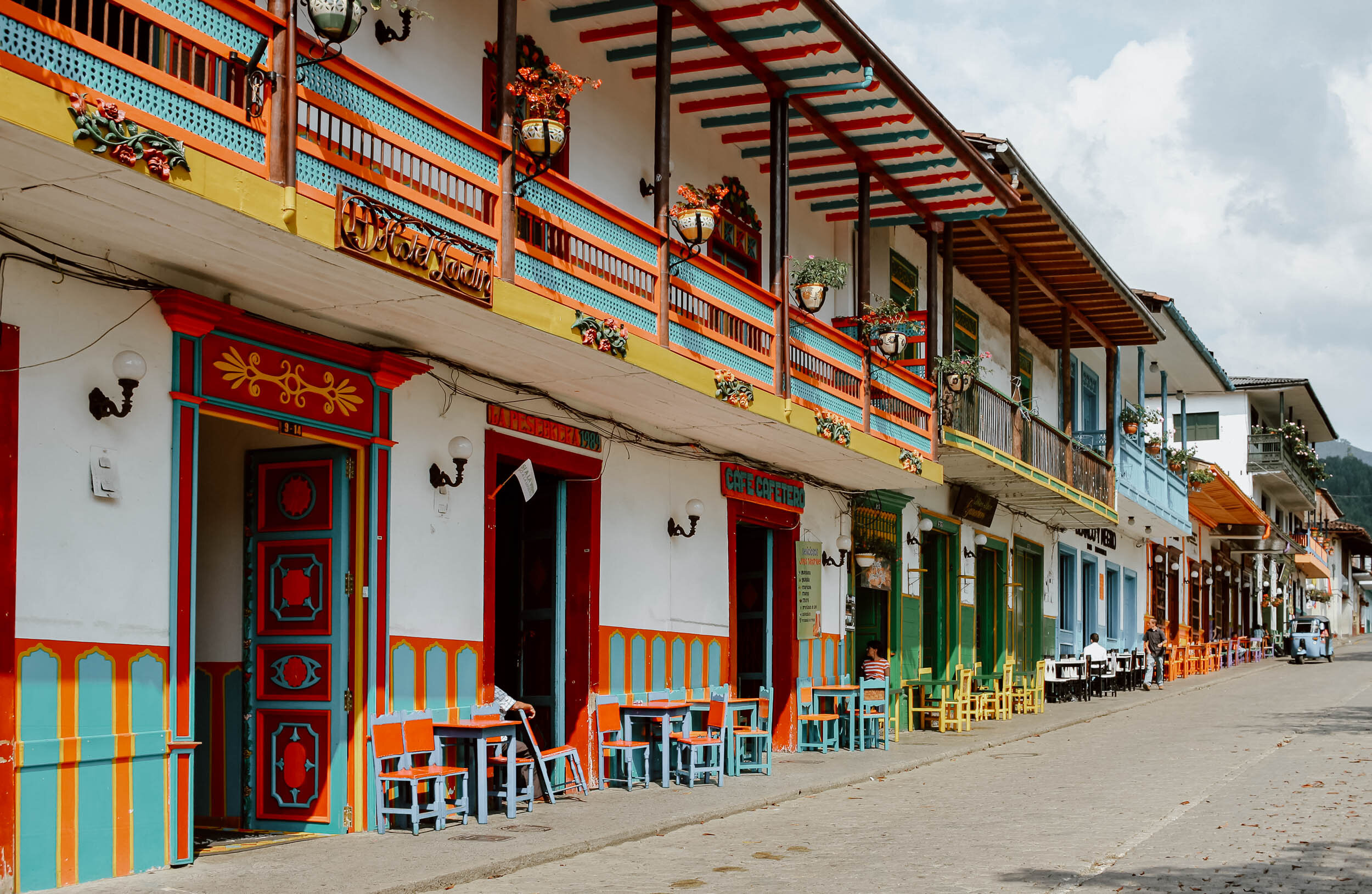
Shield
According to the rule that establish the heraldry the Shield of Ponce is about an isolated field (surface divided in two parts by a diagonal line) that goes from the perspective of the observer, from the an upper left angle to an inferior right angle. Its colors are red and black, and has golden borderline. On the center of the shield, appears an upright lion over a bridge. The upper part of the bridge has a golden color, the central brick y and the inferior imitating a stone, is a gray color. Under the bridge include some gray wavy lines. Over the shield rest a golden crown mural, from five towers simulating being made from masonry or stone, black outlines, with red opening in form of windows. A branch from a coffee bush with its fruit around the shield on the left side and a stem of a sugar cane surrounds it from the right side. The symbols that form the shield are the following: The field of the shield represents the flag of the municipality of Ponce, divided diagonally in the traditional ponceño colors: red and black. The lion over the bridge constitutes is an illusion to the surname of the conqueror and first governor of Puerto Rico, Juan Ponce de León. The whole is what in the heraldry called talking weapon (insignia). The crown mural is the stamp (insignia that is placed over the shield) of its own municipal crests. Its five towers indicate that over the Spanish Sovereignty, Ponce made the category and title of City.
The lion over the bridge constitutes is an illusion to the surname of the conqueror and first governor of Puerto Rico, Juan Ponce de León. The whole is what in the heraldry called talking weapon (insignia). The crown mural is the stamp (insignia that is placed over the shield) of its own municipal crests. Its five towers indicate that over the Spanish Sovereignty, Ponce made the category and title of City.
Important Fact: The Shield of Ponce was adopted officially in 1984. Its design is based upon the seal adopted by the city in 1844, under the administration of the mayor Salvador de Vives.
HIMNO
¡Oh, Ponce! En mi corazón
cuando oigo tu nombre
yo siento el rugido
de un fiero león.
Borinque nunca olvidará
que al son de la danza,
la bomba y la plena
la hiciste bailar.
Tu Parque de Bombas es ya
templo de una historia
que tu Vieja Ceiba
ha visto pasar…
¡Ponce! Siempre serás tú
joya que mirarte
habrá que llamarte
La Perla del Sur.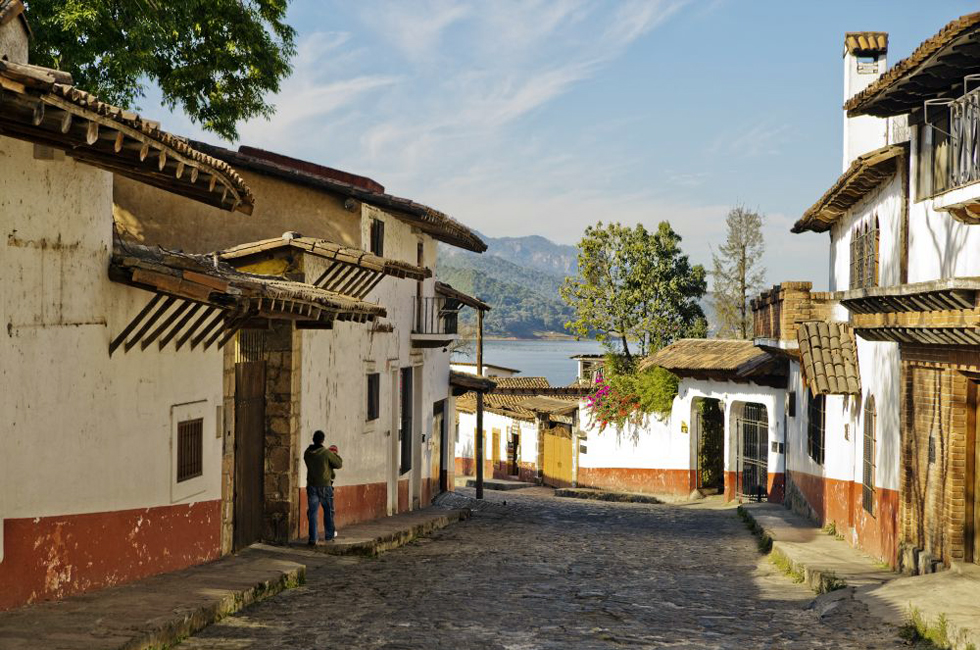
Tu rojo y negro pabellón
bandera es de gloria
que en toda victoria
es tu inspiración.
Tu Parque de la Abolición
recuerda la lucha
de tus bravos hijos
por la libertad.
En coche quiero disfrutar
las dulces quenepas
y ver tus encantos
Ciudad Señorial…
¡Ponce! Siempre serás tú
joya que al mirarte
habrá que llamarte
La Perla del Sur.
Autor: Dr. Angel Luis Rodríguez Rosado
La Perla del Sur dice ¡Presente! en voz alta, en todo lo que enaltezca el nombre de Puerto Rico. La música y el folklore no son la excepción. La Danza, la Bomba y la Plena son otra muestra de ello.
Danza Ponceña
Se denomina así al género musical que se desarrolló en Puerto Rico entre los años de 1848 y 1855, mediados del siglo XIX. No empece al surgimiento y éxito de diversas modalidades musicales en Puerto Rico, a través del tiempo, la danza es el género musical asociado a la identidad del puertorriqueño, a tal grado, que la Borinqueña, el himno de Puerto Rico, es una danza. La danza es la que refleja el alma, el sentir como pueblo y el devenir histórico del puertorriqueño. “La Sapa”, compuesta por Aurelio Dueño, es la danza puertorriqueña más antigua que se conoce. De la que se conserva la partitura más antigua, la Hortensia, compuesta, en 1855, por Ginés Ramos.
La danza es la que refleja el alma, el sentir como pueblo y el devenir histórico del puertorriqueño. “La Sapa”, compuesta por Aurelio Dueño, es la danza puertorriqueña más antigua que se conoce. De la que se conserva la partitura más antigua, la Hortensia, compuesta, en 1855, por Ginés Ramos.
Ya desde 1870 la Danza es considerada un género musical netamente puertorriqueño. Ponce tiene el mérito de haber promovido su desarrollo y producción en la figura del “Padre de la Danza Puertorriqueña”, Manuel Gregorio Tavárez. Juan Morel Campos, distinguido alumno de Tavárez, es el más prolífico compositor de danzas en Puerto Rico.
“
Danza Ponceña”
It is called that to the musical genre that was develop in Puerto Rico during Mid-19th Century. I did not begin the emergence and success of various musical modalities in Puerto Rico, over time, dance is the musical genre associated with the identity of the Puerto Rican, to the point that “La Borinqueña”, the hymn of Puerto Rico, is a dance. The dance it’s the one that reflects the soul, the feeling of the people and the becoming of history of the Puerto Rican. “La Sapa” compose by Aurelio Dueño, is the oldest Puerto Rican dance that it is known of. The oldest sheet music preserve, is the “Hortensia”, compose in 1855 by Ginés Ramos.
The dance it’s the one that reflects the soul, the feeling of the people and the becoming of history of the Puerto Rican. “La Sapa” compose by Aurelio Dueño, is the oldest Puerto Rican dance that it is known of. The oldest sheet music preserve, is the “Hortensia”, compose in 1855 by Ginés Ramos.
Since 1870 the Dance is considered a musical genre purely Puerto Rican. Ponce has the merit of having promoted its development and production in the figure of “Padre de la Danza Puertorriqueña” (Father of the Puerto Rican Dance), Manuel Gregorio Tavárez. Juan Morel Campos, distinguish student of Tavárez, the most prolific composer of dance in Puerto Rico.
Bomba y Plena
La Bomba y la Plena son ritmos musicales, heredados de los esclavos africanos que trabajaban en el cultivo de la caña en Ponce. Abolida la esclavitud, en 1873, muchos ex esclavos se establecieron en el sector San Antón, en Ponce. Allí, entre ellos, surgió la bomba, un ritmo musical, mezcla de ritmos africanos adaptados al área caribeña. La Plena, una narrativa cantada, de los aconteceres diarios de la vida pueblerina, con contenido irónico, crítico y humorístico, surgió, también, en el barrio San Antón de Ponce. Las plenas más conocidas son: Cortaron a Elena, Mamita llegó el obispo, Cuando las mujeres quieren a los hombres y Tintorera del mar. Al desarrollo de la plena han contribuido, Toñín Romero, Manuel Jiménez – Canario, Siso Muriel, Tití Rodríguez, Bumbún, Carolina Clark y Tanito Berdeguez.
La Plena, una narrativa cantada, de los aconteceres diarios de la vida pueblerina, con contenido irónico, crítico y humorístico, surgió, también, en el barrio San Antón de Ponce. Las plenas más conocidas son: Cortaron a Elena, Mamita llegó el obispo, Cuando las mujeres quieren a los hombres y Tintorera del mar. Al desarrollo de la plena han contribuido, Toñín Romero, Manuel Jiménez – Canario, Siso Muriel, Tití Rodríguez, Bumbún, Carolina Clark y Tanito Berdeguez.
“
Bomba y Plena”
“La Bomba y la Plena” are musical rhythms, inherited from the African Slaves that worked with the sugar cane crops in Ponce. Abolish the slavery, in 1873, much of the ex-slaves establish themselves in the sector San Antón, in Ponce. There between them, emerge “La Bomba”, a musical rhythm, a mix of African Rhythms adapted to the area of the Caribbean. “La Plena” tells about the daily happenings of the provincial life, with ironic, critic and humoristic content, emerge, also, in the neighborhood of San Antón of Ponce.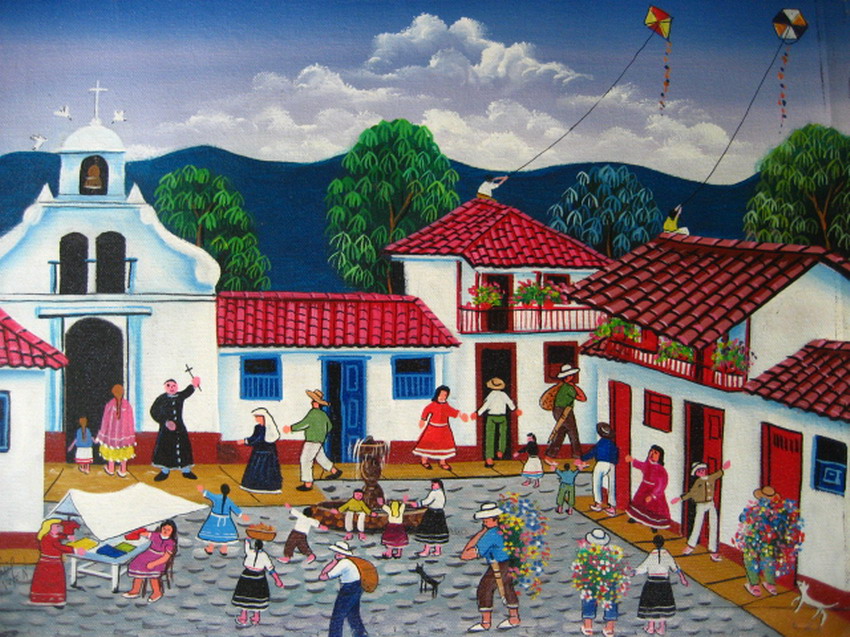 The best known of the “plenas” are: “Cortaron a Elena”, Mamita llegó el Obispo”, Cuando las mujeres quieren a los hombres” and Tintorera del Mar”. People who have contributed to the development of “La Plena” are: Toñín Romero, Manuel Jiménez – Canario, Siso Muriel, Tití Rodríguez, Bumbún, Carolina Clark and Tanito Berdeguez.
The best known of the “plenas” are: “Cortaron a Elena”, Mamita llegó el Obispo”, Cuando las mujeres quieren a los hombres” and Tintorera del Mar”. People who have contributed to the development of “La Plena” are: Toñín Romero, Manuel Jiménez – Canario, Siso Muriel, Tití Rodríguez, Bumbún, Carolina Clark and Tanito Berdeguez.
In Spain, the authorities want to ban bullfighting, people went to rallies
https://ru.sputnik.kg/20160316/1023253202.html
In Spain, the authorities want to ban bullfighting, people went to rallies
In Spain, the authorities want to ban bullfighting , the people came out to rallies
Spaniards are trying to protect the art of tauromachy by rallies. They refer to the fact that bullfighting is the cultural heritage of Spain. 03/16/2016, Sputnik Kyrgyzstan
2016-03-16T10:19+0600
press digest, news, world, spain
press digest, news, world, spain
BISHKEK, March 16 — Sputnik. Forty thousand Spaniards marched on March 13 in support of the bullfight, Sputnik Latvia reports with a link to the El Pais newspaper.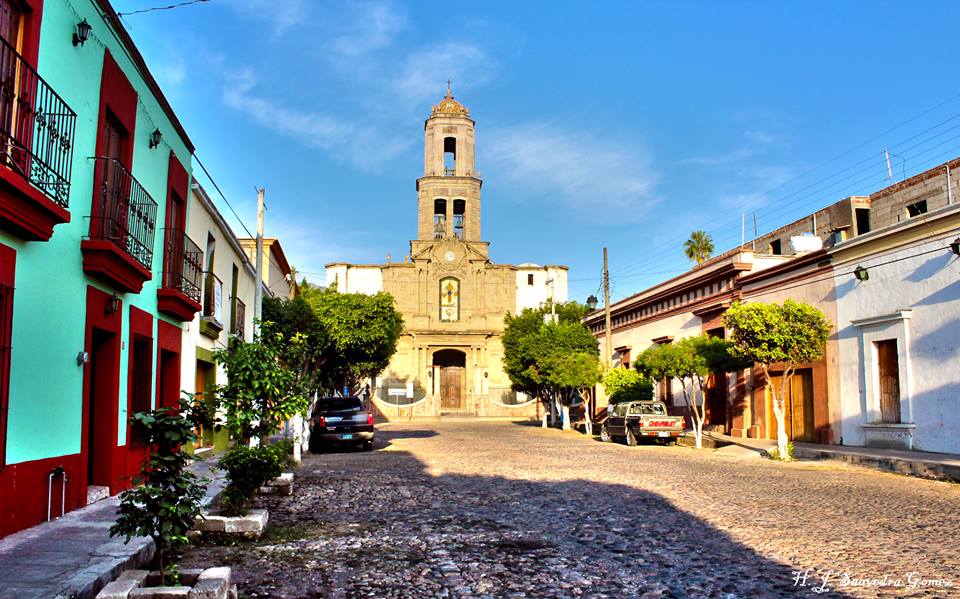
Protesters marched through the streets of Valencia in eastern Spain. So they marked the beginning of the big Fallas holiday, traditionally accompanied by bullfighting.
Salburun: Kyrgyzstanis competed in archery and hunting
The marchers carried banners in support of bullfighting as the most important element of the cultural heritage of Spain. The action was led by the most famous matadors of the country: José Thomas, Morante de la Puebla, El Juli, Juan José Padilla, Enrique Ponce.
The march was organized by the Valencia Bullfighting Association and was held under the motto “Bulls, culture, traditions and freedom of the people”. The head of the organization, Vicente Nogueroles, recalled that bullfighting is officially recognized as part of the country’s cultural heritage and is protected by the constitution.
Matador Morante de la Puebla said that the bullfighters are under political pressure.
“We are here to convey to everyone: bullfighting is our life, it is our tradition, even if some refuse to accept it.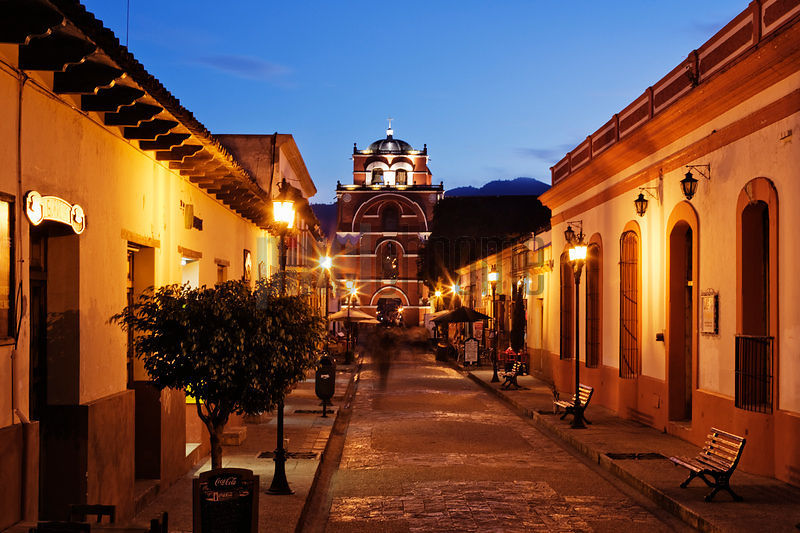 ”
”
He demanded that bullfighters be treated with the same respect as other creative professions.
In parallel, another rally took place in Valencia – a protest against bullfighting. 20 scantily clad activists sprayed themselves with red ink, symbolizing the suffering of animals.
Opponents of violence and advocates of art
Animal advocates condemn people who come to bullfights.
“This contributes to the escalation of cruelty, because people endure this charge. They observed the stages of killing an animal, which contributes to the further tightening of society,” Irina Novozhilova, president of the Vita Animal Rights Center, said in an interview with Sputnik radio.
A week in photos: from bullfighting to reenactment of the Battle of Waterloo
Experts note that polar political interests are manifested in relation to bullfighting. Anna Kovrigina, senior lecturer in the Department of Spanish at the Faculty of Foreign Languages and Regional Studies of Moscow State University, believes that “by opposing bullfighting, politicians are trying to gain weight, they are trying to discredit the central government by any means, including by questioning cultural traditions,” she said in an interview with Sputnik radio .
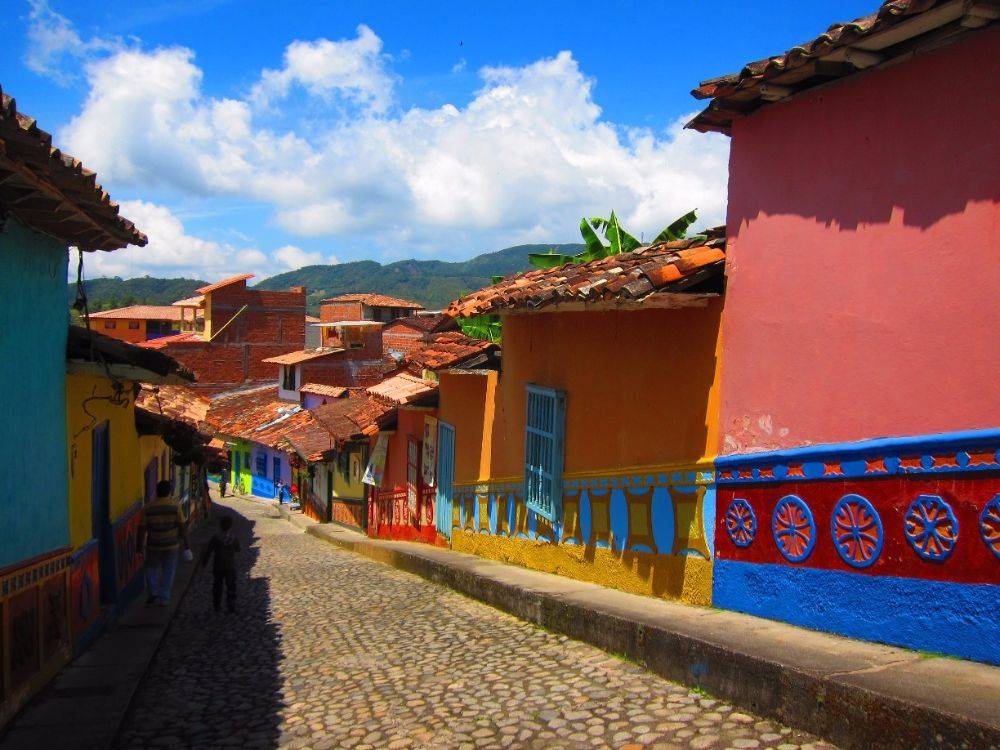 Ferré
Ferré
 The festivities include dances, food, parades and religious processions.
The festivities include dances, food, parades and religious processions. The celebration lasts a week and takes place in mid-May and centers around the danza, a formal, elegant dance form that originated in the city of Ponce. Festivities (held in Teatro La Perla) includes conferences, danza concerts by string quartets, a parade, a danza competition and demonstrations by senior couples who danced danza in their youth, in period dress.
The celebration lasts a week and takes place in mid-May and centers around the danza, a formal, elegant dance form that originated in the city of Ponce. Festivities (held in Teatro La Perla) includes conferences, danza concerts by string quartets, a parade, a danza competition and demonstrations by senior couples who danced danza in their youth, in period dress.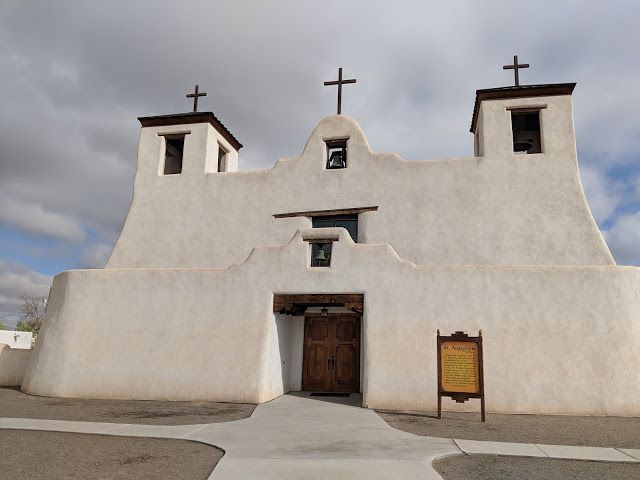 ”
”